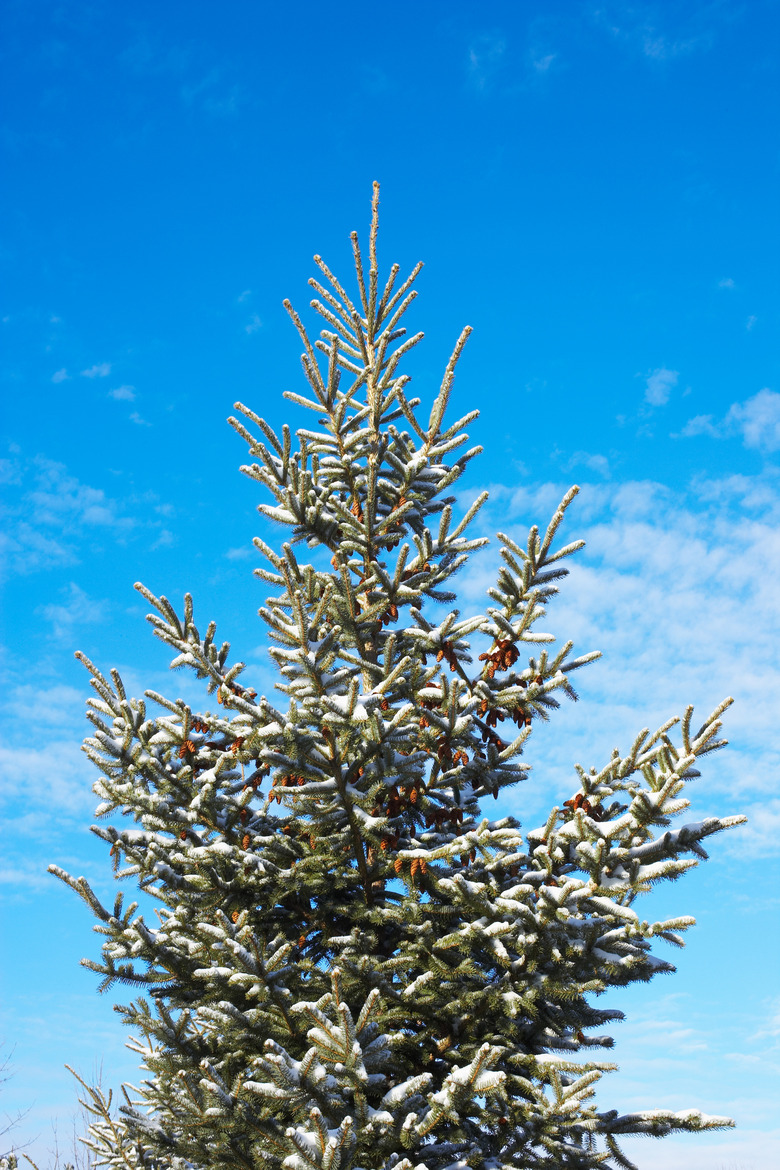How To Identify Evergreen Trees In Wisconsin
From the fragrant white pine to the soaring Douglas fir, Wisconsin is home to more than a dozen varieties of evergreen trees. One of the distinctive traits of evergreens is that they shed their leaves, or needles, throughout the year, while deciduous trees drop all their leaves at one time. Once you've established that a tree is indeed an evergreen, you can determine the basic differences that identify evergreens like spruce, fir and pine, hemlock and tamarack.
Step 1
Take a walk in Wisconsin's late fall, after deciduous trees have dropped their leaves. It's easier to pick out evergreens because they'll still be colorful against the bare branches of other trees.
Step 2
Test the foliage with your fingers. If the tree has needles that are short, narrow and sharp, it's probably a spruce. The needles of a white pine are much softer, more flexible and can be as long as 10 inches. Fir trees have flat needles with blunt ends. Hemlock trees have short, soft needles. Wisconsin has plenty of all four.
Step 3
- Take a walk in Wisconsin's late fall, after deciduous trees have dropped their leaves.
- If the tree has needles that are short, narrow and sharp, it's probably a spruce.
Step 4
Look for cones on the ground and the branches to confirm the type of evergreen. Hemlocks and tamarack have 1/2-inch cones decorating their branches. Pine cones are the largest, with some varieties as large as 9 inches long and wide. Next, look at how the cones are positioned on the branch. The cones of pine and spruce trees hang straight down from the branch, while the cones of fir trees stand straight up. Broadleaf evergreens like juniper and yew produce berries in winter. The color of the berries can be red, blue, purple, black or white, depending on the species.
Step 5
- Look for cones on the ground and the branches to confirm the type of evergreen.
- Broadleaf evergreens like juniper and yew produce berries in winter.
Step 6
Look at the shape of the evergreen. Spruce, pine and fir trees have a pyramidal shape that's wide at the base and pointed at the top. The hemlock tree has a weeping form, its delicate branches trailing sharply down. Tamarack is tall and narrow, while yew is shrubby and short. Junipers are slow-growing, and while some are narrow, like the skyrocket juniper, others have a free and wide branching habit.
